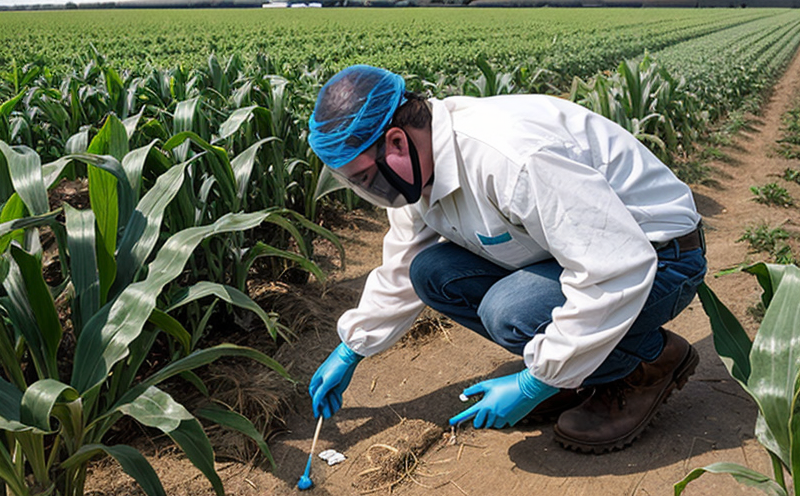Pesticide Residue Testing in Crops
Understanding pesticide residue testing in crops is essential to ensure food safety and environmental protection. Pesticides are used extensively across the agricultural sector for pest control, disease management, and weed suppression. However, excessive or improper use of these chemicals can lead to harmful residues on harvested products. This poses significant risks not only to human health but also to the ecosystem.
The importance of pesticide residue testing lies in its role as a key component of food safety regulations worldwide. Regulatory bodies like the US Environmental Protection Agency (EPA), Food and Drug Administration (FDA) in the United States, European Commission for the European Union, and similar organizations around the globe enforce strict guidelines regarding allowable limits of pesticides on agricultural products.
Proper testing ensures compliance with these regulations, protecting consumers from potential health hazards. Additionally, it helps maintain consumer confidence by ensuring that food products meet high standards of safety and quality. For businesses involved in agriculture or food production, adherence to these tests is crucial for maintaining market access and reputation.
The testing process typically involves collecting samples from various crops, which are then analyzed using sophisticated analytical methods such as gas chromatography-mass spectrometry (GC-MS), liquid chromatography-tandem mass spectrometry (LC-MS/MS), or enzyme-linked immunosorbent assay (ELISA). These techniques allow for precise identification and quantification of pesticide residues down to parts per billion levels.
| Standard | Description |
|---|---|
| ISO 14926:2017 | Analytical methods for the determination of pesticide residues in food and feed. |
| ASTM E1580-18 | Standard practice for sampling and preparation of field vegetables for analysis of pesticide residues. |
| EN 12697-4:2003 | Determination of organophosphorus pesticides in fruit and vegetables by gas chromatography. |
The choice of analytical method depends on the type of pesticide, matrix (crop), and regulatory requirements. For instance, GC-MS is preferred for its high sensitivity and specificity, while LC-MS/MS offers better detection limits and broader applicability.
Why It Matters
Pesticide residue testing in crops plays a critical role in safeguarding public health by ensuring that food products are free from harmful levels of pesticides. Regulatory compliance is paramount to avoid legal penalties and maintain market reputation.
In addition to regulatory adherence, regular pesticide residue testing supports sustainable agricultural practices. It helps farmers make informed decisions about pesticide usage, thereby reducing unnecessary applications. This not only minimizes environmental impact but also promotes the long-term viability of crop production.
Moreover, accurate testing enhances consumer trust by providing assurance that food products meet stringent safety standards. This is particularly important given increasing awareness about health and environmental issues associated with chemical use in agriculture.
Frequently Asked Questions
Environmental and Sustainability Contributions
- Reduces water pollution by minimizing pesticide runoff into rivers, lakes, and groundwater.
- Promotes biodiversity through more sustainable farming practices.
- Decreases air pollution from overuse of certain pesticides.
- Supports healthier soil ecosystems by discouraging excessive chemical use.





